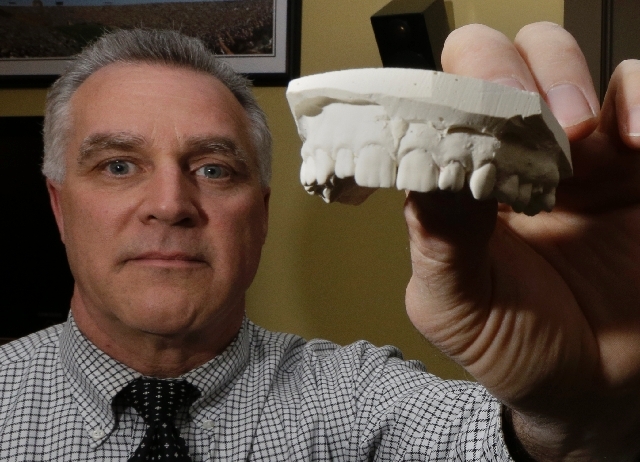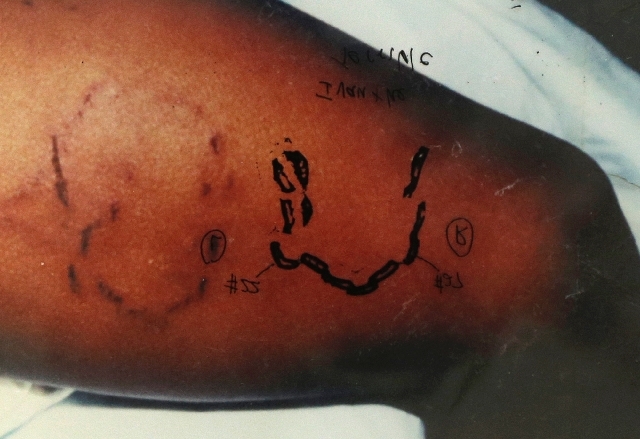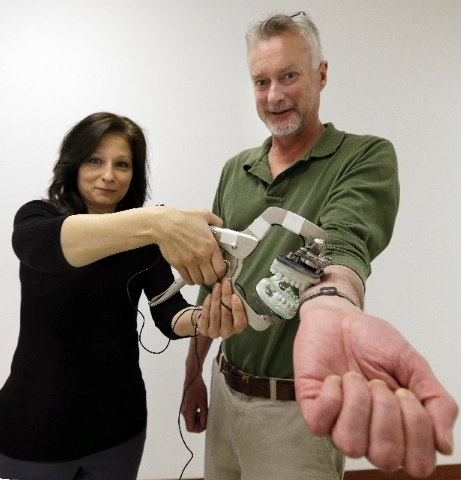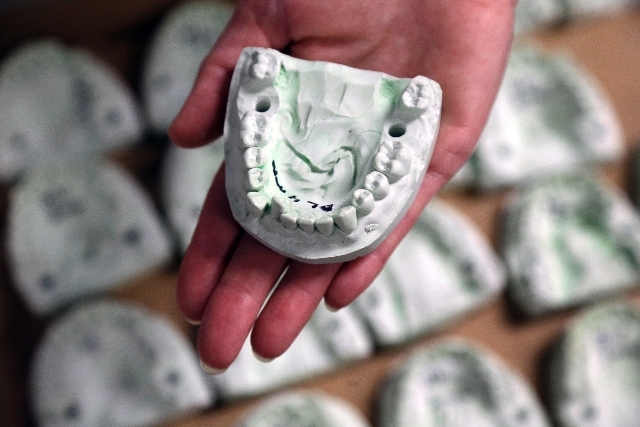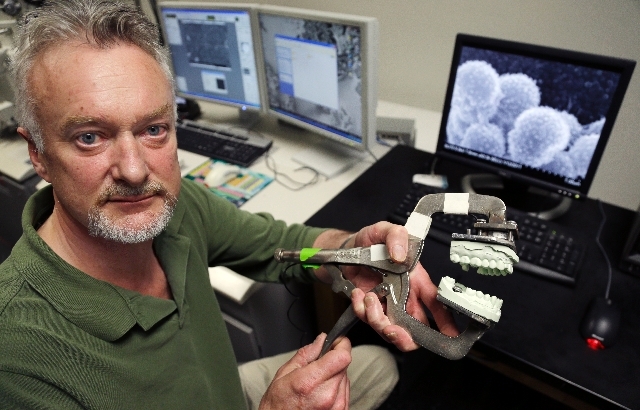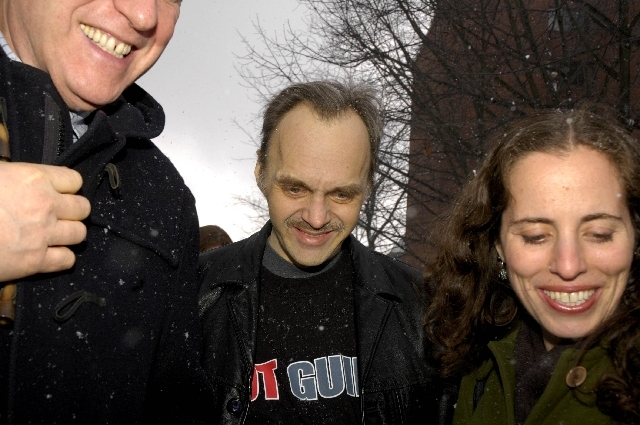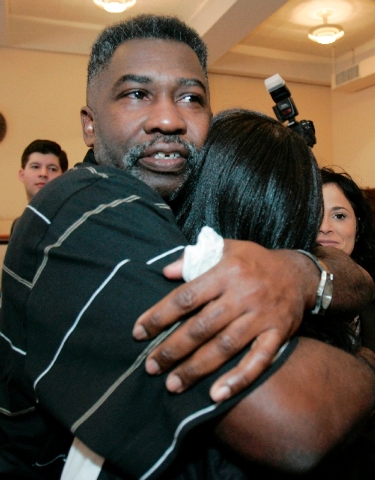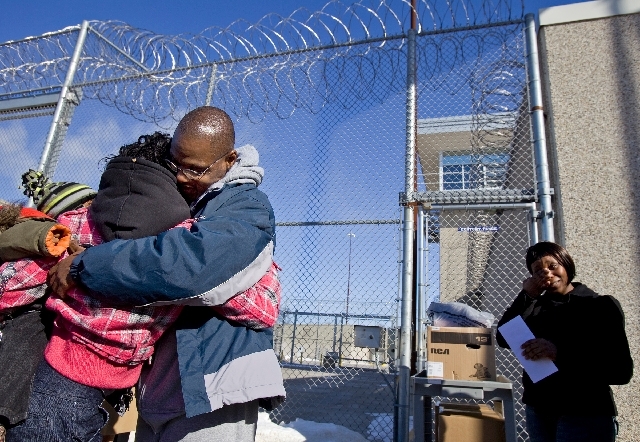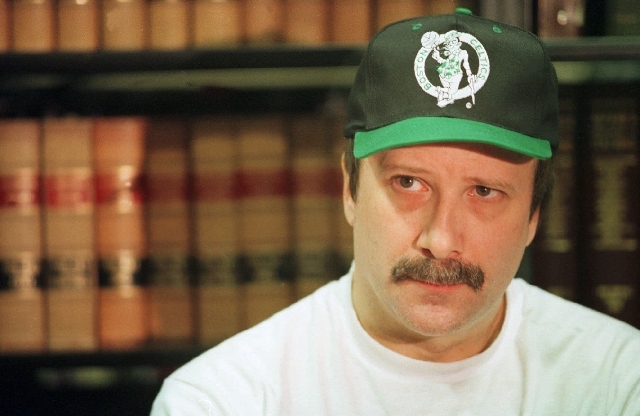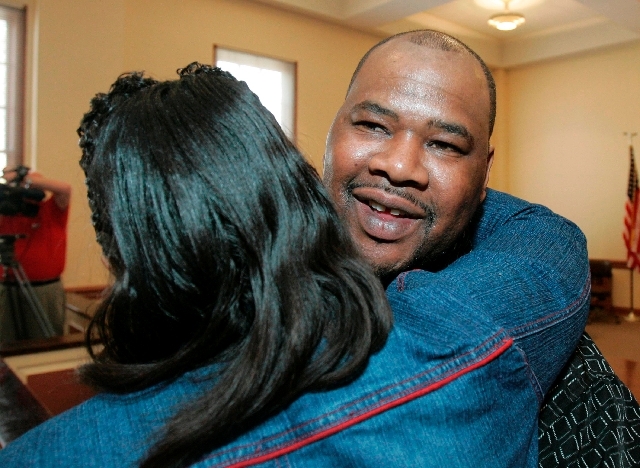Bites derided as unreliable in court
At least 24 men convicted or charged with murder or rape based on bite marks on the flesh of victims have been exonerated since 2000, many after spending more than a decade in prison. Now a judge’s ruling later this month in New York could help end the practice for good.
A small, mostly ungoverned group of dentists carry out bite mark analysis and their findings are often key evidence in prosecutions, even though there is no scientific proof that teeth can be matched definitively to a bite into human skin.
DNA has outstripped the usefulness of bite mark analysis in many cases: The FBI doesn’t use it and the American Dental Association does not recognize it.
“Bite mark evidence is the poster child of unreliable forensic science,” said Chris Fabricant, director of strategic litigation at the New York-based Innocence Project, which helps wrongfully convicted inmates win freedom through DNA testing.
Supporters of the method, which involves comparing the teeth of possible suspects to bite mark patterns on victims, argue it has helped convict child murderers and other notorious criminals, including serial killer Ted Bundy. They say problems that have arisen are not about the method, but about the qualifications of those testifying, who can earn as much as $5,000 a case.
“The problem lies in the analyst or the bias,” said Dr. Frank Wright, a forensic dentist in Cincinnati. “So if the analyst is ... not properly trained or introduces bias into their exam, sure, it’s going to be polluted, just like any other scientific investigation. It doesn’t mean bite mark evidence is bad.”
The Associated Press reviewed decades of court records, archives, news reports and filings by the Innocence Project in order to compile the most comprehensive count to date of those exonerated after being convicted or charged based on bite mark evidence. Two dozen forensic scientists and other experts were interviewed, including some who had never before spoken to a reporter about their work.
The AP analysis found that at least two dozen men had been exonerated since 2000, mostly as a result of DNA testing. Many had spent years in prison, including on death row, and one man was behind bars for more than 23 years. The count included at least six men arrested on bite mark evidence who were freed as they awaited trial.
Two court cases this month are helping to bring the debate over the issue to a head. One involves a 63-year-old California man who is serving a life term for killing his wife, even though the forensic dentist who testified against him has reversed his opinion.
In the second, a New York City judge overseeing a murder case is expected to decide whether bite mark analysis can be admitted as evidence, a ruling critics say could kick it out of courtrooms for good.
Some notable cases of faulty bite mark analysis include:
— Two men convicted of raping and killing two 3-year-old girls in separate Mississippi crimes in 1992 and 1995. Marks on their bodies were later determined to have come from crawfish and insects.
— A New Mexico man imprisoned in the 1989 rape and murder of his stepdaughter, who was found with a possible bite mark on her neck and sperm on her body. It was later determined that the stepfather had a medical condition that prevented him from producing sperm.
— Ray Krone, the so-called “Snaggletooth Killer,” who was convicted in 1992 and again in 1996 after winning a new trial in the murder of a Phoenix bartender found naked and stabbed in the men’s restroom of the bar where she worked. Krone spent 10 years in prison, three on death row.
Raymond Rawson, a Las Vegas forensic dentist, testified at both trials that bite marks on the bartender could only have come from Krone, evidence that proved critical in convicting him. At his second trial, three top forensic dentists testified for the defense that Krone couldn’t have made the bite mark, but the jury didn’t give their findings much weight and again found him guilty.
In 2002, DNA testing matched a different man, and Krone was released.
Rawson, like a handful of other forensic dentists implicated in faulty testimony connected to high-profile exonerations, remains on the American Board of Forensic Odontology, the only entity that certifies and oversees bite mark analysts. Now retired, he didn’t return messages left at a number listed for him in Las Vegas.
Rawson has never publicly acknowledged making a mistake, nor has he apologized to Krone, who described sitting helplessly in court listening to the dentist identify him as the killer.
“You’re dumbfounded,” Krone said in a telephone interview from his home in Newport, Tenn. “There’s one person that knows for sure and that was me. And he’s so pompously, so arrogantly and so confidently stating that, beyond a shadow of doubt, he’s positive it was my teeth. It was so ridiculous.”
The history of bite mark analysis began in 1954 with a piece of cheese in small-town Texas. A dentist testified that a bite mark in the cheese, left behind in a grocery store that had been robbed, matched the teeth of a drunken man found with 13 stolen silver dollars. The man was convicted.
The first court case involving a bite mark on a person didn’t come until two decades later, in 1974, also in Texas. Two dentists testified that a man’s teeth matched a bite mark on a murder victim. Although the defense attorney fought the admissibility of the evidence, a court ruled that it should be allowed because it had been used in 1954.
Bite mark analysis hit the big time at Bundy’s 1979 Florida trial.
On the night Bundy went on a killing spree that left two young women dead and three others seriously wounded, he savagely bit one of the murder victims, Lisa Levy. A Florida forensic dentist, Dr. Richard Souviron, testified at Bundy’s murder trial that his unusual, mangled teeth were a match.
Bundy was found guilty and executed. The bite marks were considered the key piece of physical evidence against him.
That nationally televised case and dozens more in the 1980s and 1990s made bite mark evidence look like infallible, cutting-edge science, and courtrooms accepted it with little debate.
Then came DNA testing. Beginning in the early 2000s, new evidence set free men serving prison time or awaiting the death penalty largely because of bite mark testimony that later proved faulty.
At the core of critics’ arguments is that science hasn’t shown it’s possible to match a bite mark to a single person’s teeth or even that human skin can accurately record a bite mark.
Fabricant, of the Innocence Project, said what’s most troubling about bite mark evidence is how powerful it can be for jurors.
“It’s very inflammatory,” he said. “What could be more grotesque than biting someone amid a murder or a rape hard enough to leave an injury? It’s highly prejudicial, and its probative value is completely unknown.”
Fabricant and other defense attorneys are fighting to get bite mark analysis thrown out of courtrooms, most recently focusing their efforts on the New York City case.
It involves the death of 33-year-old Kristine Yitref, whose beaten and strangled body was found wrapped in garbage bags under a bed in a hotel near Times Square in 2007. A forensic dentist concluded a mark on her body matched the teeth of Clarence Brian Dean, a 41-year-old fugitive sex offender from Alabama, who is awaiting trial on a murder charge.
Dean told police he killed Yitref in self-defense, saying she and another man attacked him in a robbery attempt after he agreed to pay her for sex; no other man was found.
Dean’s defense attorneys have challenged the prosecution’s effort to admit the bite mark evidence, and a judge is expected to issue a ruling as early as mid-June — a pivotal step critics hope could eventually help lead to a ban on such evidence.
A dayslong hearing last year over the scientific validity of bite marks went to the heart of the debate.
“The issue is not that bite mark analysis is invalid, but that bite mark examiners are not properly vetted,” Dr. David Senn, of San Antonio, testified at the hearing.
Another case gaining attention is that of William Joseph Richards, convicted in 1997 of killing his wife, Pam, in San Bernardino, Calif., and sentenced to life in prison.
Pam Richards had been strangled and beaten with rocks, her skull crushed by a cinder block, and her body left lying in the dirt in front of their home, naked from the waist down.
Dr. Norman Sperber, a well-respected forensic dentist, testified that a crescent-shaped wound on her body corresponded with an extremely rare abnormality in William Richards’ teeth.
But at a 2009 hearing seeking Richards’ freedom, Sperber recanted his testimony, saying that it was scientifically inaccurate, that he no longer was sure the wound was a bite mark, and that even if it was, Richards could not have made it.
Shortly after that, a judge tossed out Richards’ conviction and declared him innocent. The prosecution appealed and the case went all the way to the California Supreme Court, which ruled in December that Richards had failed to prove his innocence, even though the bite mark evidence had been discredited. In a 4-3 decision, the court said forensic evidence, even if later recanted, can be deemed false only in very narrow circumstances and Richards did not meet that high bar.
Since April 27, Richards’ attorneys have been on what they dubbed a two-month “innocence march” from San Diego to the state capital, Sacramento, to deliver a request for clemency to Gov. Jerry Brown and raise awareness about wrongful convictions. They are expected to arrive later this month.
The American Board of Forensic Odontology recently got a request from Richards’ attorneys, who are affiliated with the Innocence Project, for a written opinion on the shoddy bite mark evidence used against him. The board declined.
Only about 100 forensic dentists are certified by the odontology board, and just a fraction are actively analyzing and comparing bite marks. Certification requires no proficiency tests. The board requires a dentist to have been the lead investigator and to have testified in one current bite mark case and to analyze six past cases on file — a system criticized by defense attorneys because it requires testimony before certification.
Testifying can earn a forensic dentist $1,500 to $5,000 per case, though most testify in only a few a year. The consequences for being wrong are almost nonexistent. Many lawsuits against forensic dentists employed by counties and medical examiner’s offices have been thrown out because as government officials, they’re largely immune from liability.
Only one member of the American Board of Forensic Odontology has ever been suspended, none has ever been decertified, and some dentists still on the board have been involved in some of the most high-profile and egregious exonerations on record.
Even Dr. Michael West, whose testimony is considered pivotal in the wrongful convictions or imprisonment of at least four men, was not thrown off the board. West was suspended and ended up stepping down.
Among his cases were the separate rapes and murders of the two 3-year-old girls in Mississippi, where West testified that two men later exonerated by DNA evidence were responsible for what he said were bite marks on their bodies. The marks later turned out to be from crawfish and insects, and a different man’s DNA matched both cases.
West now says DNA has made bite mark analysis almost obsolete.
“People love to have a black-and-white, and it’s not black and white,” said West, of Hattiesburg, Miss., where he has a dental practice but no longer works on bite mark cases. “I thought it was extremely accurate, but other cases have proven it’s not.”
Levon Brooks, convicted of killing one of the girls, spent 16 years in prison. The other, Kennedy Brewer, was behind bars for 13 years, many of them on death row.
West defended his testimony, saying he never testified that Brooks and Brewer were the killers, only that they bit the children, and that he’s not responsible for juries who found them guilty.
Other dentists involved in exonerations have been allowed to remain on the board as long as they don’t handle more bite mark cases, said Wright, the Cincinnati forensic dentist.
“The ABFO has had some internal issues as far as not really policing our own,” he said.
Wright and other forensic dentists have been working to develop guidelines to help avert problems of the past while retaining bite mark analysis in the courtroom.
Their efforts include a flow chart to help forensic dentists determine whether bite mark analysis is even appropriate for a given case. Wright also is working on developing a proficiency test that would be required for recertification every five years.
An internal debate over the future of the practice was laid bare at a conference in Washington in February, when scores of dentists — many specializing in bite mark analysis — attended days of lectures and panel discussions. The field’s harshest critics also were there, leading to heated discussions about the method’s limitations and strengths.
Dr. Gregory Golden, a forensic dentist and president of the odontology board, acknowledged that flawed testimony has led to the “ruination of several innocent people’s lives” but said the field was entering a “new era” of accountability.
Souviron, who testified against Bundy in 1979 and is one of the founding fathers of bite mark analysis in the U.S., argued there’s a “real need for bite marks in our criminal justice system.”
In an interview with the AP, Souviron compared the testimony of well-trained bite mark analysts to medical examiners testifying about a suspected cause of death.
“If someone’s got an unusual set of teeth, like the Bundy case, from the standpoint of throwing it out of court, that’s ridiculous,” he said. “Every science that I know of has bad individuals. Our science isn’t bad. It’s the individuals who are the problem.”
Many forensic dentists have helped the Innocence Project win exonerations in bite mark cases gone wrong by re-examining evidence and testifying for the wrongfully convicted.
But a once-cooperative relationship has turned adversarial ever since the Innocence Project began trying to get bite mark evidence thrown entirely out of courtrooms, while at the same time using it to help win exonerations.
“They turn a blind eye to the good side of bite mark analysis,” Golden told the AP.
One example is a case Wright worked on in 1998. He analyzed the bite marks of the only three people who were in an Ohio home when 17-day-old Legacy Fawcett was found dead in her crib. Of the three, two sets of teeth could not have made the bite marks, Wright testified; only the teeth of the mother’s boyfriend could have. The boyfriend was found guilty of involuntary manslaughter and served eight years in prison.
Without the bite mark, Wright said, the wrong person might have been convicted or the man responsible could have gone free, or both.
“Bite mark evidence can be too important not to be useful,” Wright said. “You can’t just throw it away.”
———
Myers reported from Cincinnati. Associated Press News Researcher Barbara Sambriski in New York and AP writers Eric Tucker in Washington, D.C., and David B. Caruso in New York contributed to this report.



